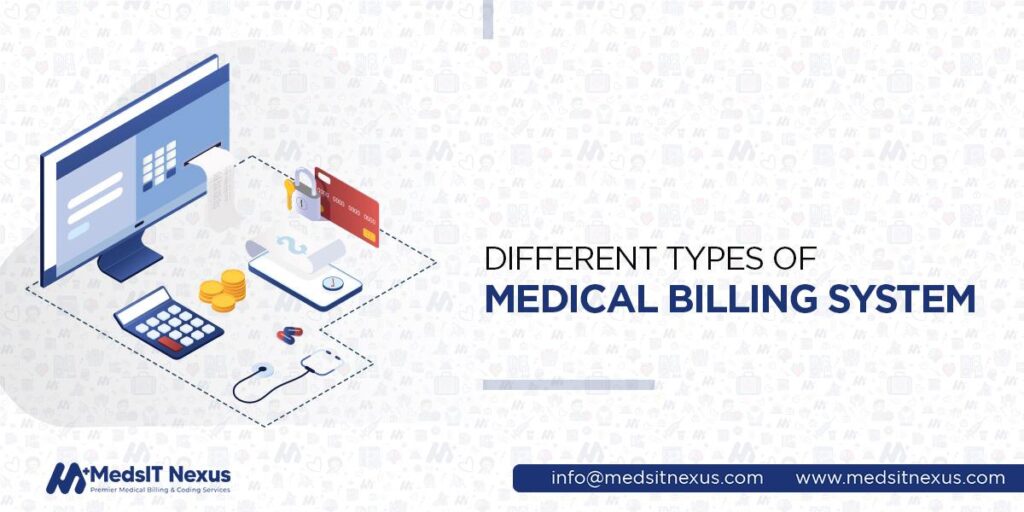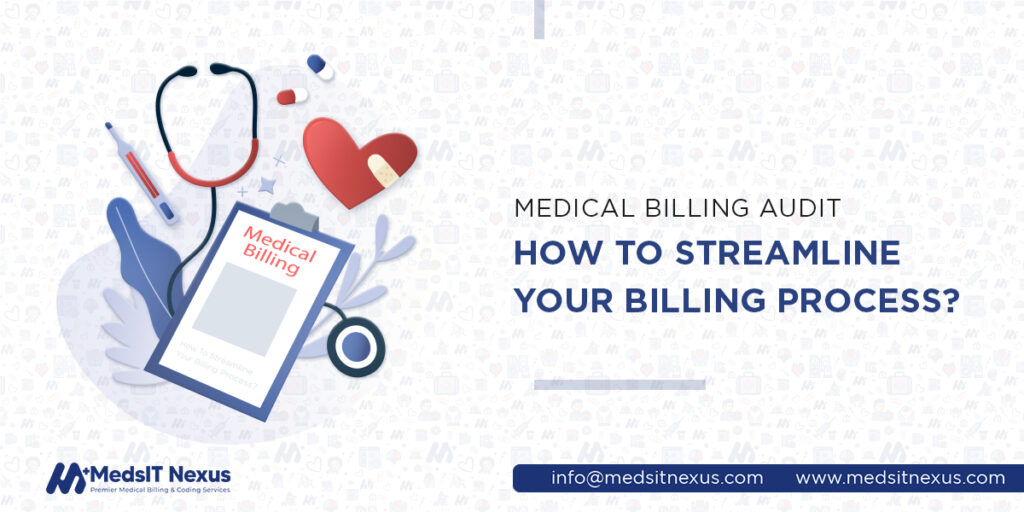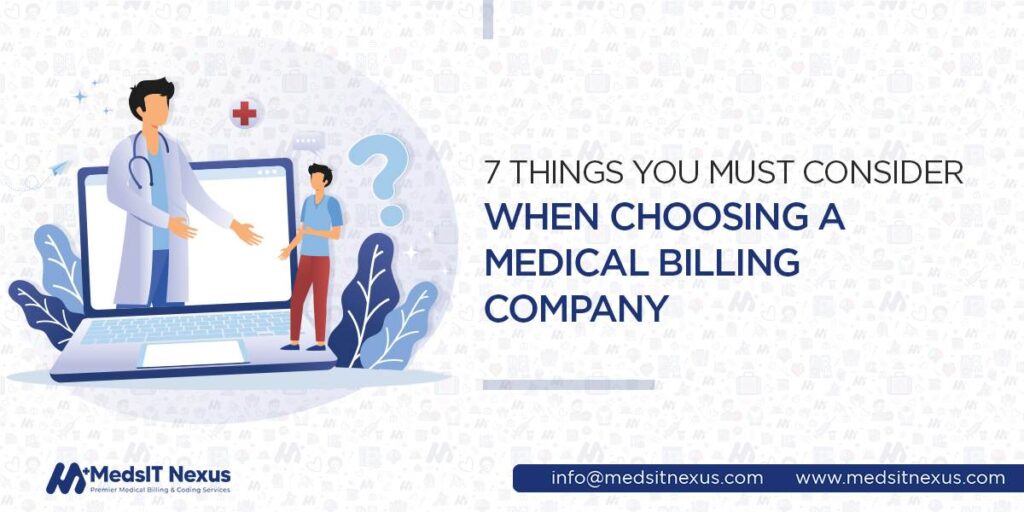Different types of medical billing system

You might not be considering integrating medical billing systems if your medical practices are sustainable and performing efficiently, but you should know that your current practices could become more profitable if you deploy a practice management system that best suits your healthcare organization’s infrastructure. It provides a powerful business intelligence tool kit that revolutionizes the outdated revenue cycle process, which includes sourcing physical files for information to process bills, shifting through piles of paperwork, and manually ensuring processing payments correctly and promptly. It consumes the extraordinary time of the physicians and is also open to typo errors which hold back the practices from ultimate efficiency in billing. A medical billing system ensures your medical practice runs smoothly, efficiently, and in a modernized way which helps you to spend maximum time in patient care and generate more revenue much faster.
Different types of medical billing systems:
which one is the best for your medical practice?
Open, closed, and isolated are the three different billing systems in the healthcare industry, and each integration into the medical practices differs according to the need of medical practices. Therefore, this post will demonstrate these systems’ vital role in practice management. So, without further do, let’s start a discussion.
Closed medical billing system
This model of the medical billing system is best suited for the stand-alone medical practice where the health records are not shared among different healthcare facilities, doctors, and others; instead, the patient’s records are isolated to one medical practice.
Example Of Closed Medical Billing System
The best example of a closed medical billing system is EMR which stands for electronic medical
records, the electronic version of paper charts. Closed medical billing systems are commonly used in
private medical practices as it is perfect for maintaining privacy. The records remain confidential
and are not shared across the board.
Use of closed medical billing system
Electronic medical records can help medical providers whose practices are very limited. Most
beginners get confused about using EMR in practice, but these are essentially not more than the
digital versions of previous-schools paper charts.
Shifting from paper records to the EMR could be the best decision for the medical practice, which
results in multiple benefits such as:
- By the use of EMR, patient records remain secure
- It eliminates the medical practices from the hassle of maintaining physical copies of paper records
- The use of EMR maximizes the security and privacy of Protected Health Information (PHI)
- Quick follow-ups and decision-making become much easier with the use of EMR
- Medical providers also excessively use EMRS to track the patient’s vital parameters periodically, which helps to promptly identify any need for a change of treatment plans
Isolated medical billing system
The benefits of an isolated medical billing system are associated explicitly with entities directly connected with patient care instead of the general entities in the healthcare organization, and these systems do not traditionally participate in the medical billing structure.
Example Of Isolated Medical Billing System: The isolated medical billing system is an isolated one that is almost removed from healthcare facilities, physicians, and practices. Patient Health Records are used in the isolated medical billing system because they are managed and designed by the patients. These records are completely different from the EMRs and EHRs therefore, PHRs can’t replace them.
Use of isolated medical billing system
Official health records can’t be legally replaced with Patient Health records; therefore, the isolated medical billing system is not commonly used in medical organizations.PHR can be used to fill out the medical practice’s official records using appropriate software, but it requires open communication between software to ensure that everything gets transferred correctly.
Open medical billing system
An open medical billing system allows providers to transfer health records across different medical practices and facilities, representing a more collaborative structure than the closed one.
Example Of Open Medical Billing System: Electronic Health Records Are the best example of the Open Medical Billing System as it speaks more for the collaborative design. In this billing system, the patient’s data is transferred to multiple practices through Electronic Health Records and also provides easiness in accessing healthcare records for all the entities in the medical organization, including providers, patients, chief stakeholders, insurance payers, and medical billing teams. Additionally, the information is also accessible along with the privilege of editing through a third-party vendor and more than one healthcare organization.
Use of open medical billing system
Medical organizations widely adopt the open medical billing system because of its vast flexibility. This system best suits the medical organizations that acquire a financial partnership with any third-party medical organization and the patients who need to transfer their health records from the current provider to any other one. The sensitive health data is safe and secure in EHR; hence, it ensures health data security while transferring data from one location to another and does not let unauthorized personalities access it.
MedsIT Nexus can provide you with a best medical billing system
Every medical billing system exists in the industry with its own pros and cons. Determining the type of the billing system according to the need for practice matters more than maintaining records. Once you have determined the billing system for your practice, you can move further to decide whether you will keep an existing software or choose a new one. MedsIT Nexus medical billing and coding services can help you determine the billing system for your medical organization.
Samuel White, MBA-HC, CPAR -
Lead Author & Senior Healthcare Revenue Cycle Strategist at MedsIT Nexus
Leads editorial process for the publication of Technical RCM guides, reimbursement optimization case studies, and compliance-focused research content, expert evaluations of RCM software and medical billing solutions.






